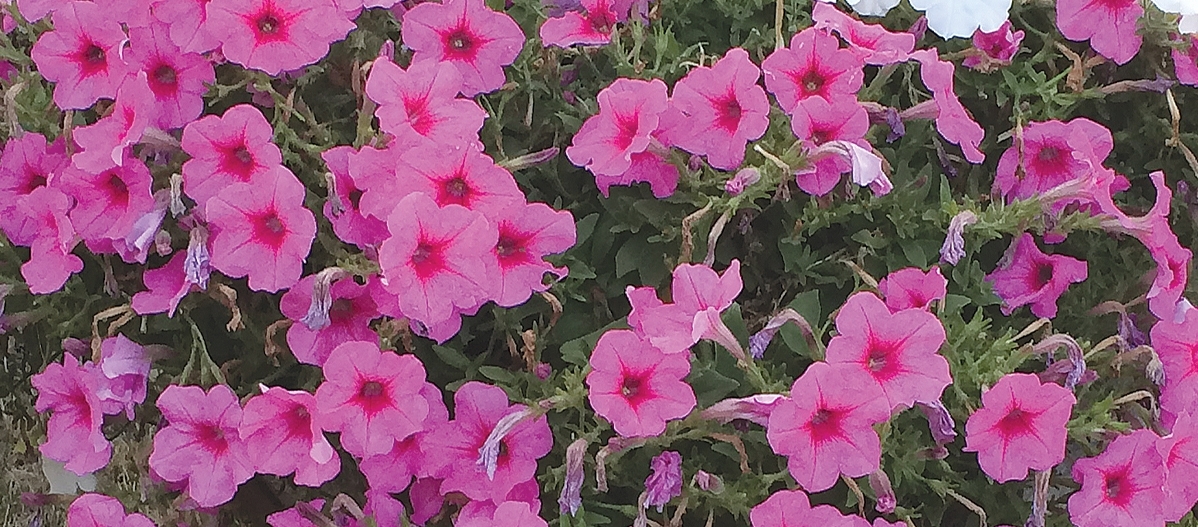Newly developed spreading and trailing petunias now produce blooms in many colors and shapes. For those reasons many of us buy them as bedding plants and put them into pots and flowerbeds each summer. However, by mid-July, plants may no longer have prolific blooms, especially those in pots.
I am going to share what I have done to keep petunias blooming in abundance all summer long. You can also use this information for other bedding plants you transfer to your yard.
Buying petunia bedding plants
Several years ago, I purchased petunia bedding plants in the six-container cartons. Removing the plant and soil, I found that although the plant looked healthy on the surface, it had almost no root system. I never purchased from that nursery again and have since found nurseries that plant their petunias early enough that the root system is extensive.
You may have to shop around and pay a little more, but it’s worth it. Buy your petunia bedding plants as soon as the nurseries open their doors to customers and keep the plants in a sunny window or potting shed until frost has passed. For pots, I favor planting wave—sometimes called cascading—petunias, because, if cared for correctly, one plant will fill a pot.
Planting bedding plants
If reusing a pot, it is important that it be clean. Try to clean the pot in the fall when the old plant and soil are removed. If you didn’t clean the pot in fall, give the interior of the pot a good cleaning with a nylon pad and let it dry in the sun before adding soil. The objective is to remove any traces of mold.
After removing the plant from the container it came in, gently pull out some of the root ends on the sides and bottom, so they will grow into the new soil. Sometimes the root is so bound at the bottom, I actually take a knife and cut off the bottom of the root ball—about a fourth-of-an-inch and then gently pull out the root ends.
Prepare the pot by putting a few small rocks in the bottom and adding good potting soil half-way. Spread slow-release granular fertilizer evenly in one layer across the soil. Add a bit more soil, and add the plant with its soil ball. Fill the pot around the ball with good soil, to the base of the plant. Tap down gently, and add more soil if it is needed.
Next cut the plant stems back to about three inches. Doing so makes the plant double in size. Water and set the pot in a sunny place. Continue to water, to keep the soil moist, but don’t drown the plant. Add soil if needed after the water has created compaction. Also spray the leaves with water every few days. The plant is then ready to set out when frost has passed. In our arid climate, water the soil around the plants frequently.
Mid-Summer Care
As soon as your Fourth of July guests have gone home, cut the plant back again but not as aggressively as when you first purchased the plant. But do give it a good haircut—sometimes cutting almost 12 inches from each stem. It takes about a week for the plant to start blooming profusely again, but it will have abundant blooms until the end of the summer.
This is a good time to spray the plants with a water-soluble fertilizer. Also, you can trim back the plants in your yard at various times, so not all have been altered at once.
Using clean pots, having a good root system, pulling out the root ends before planting, fertilizing, and trimming petunias will make them thicker all summer long. MSN










